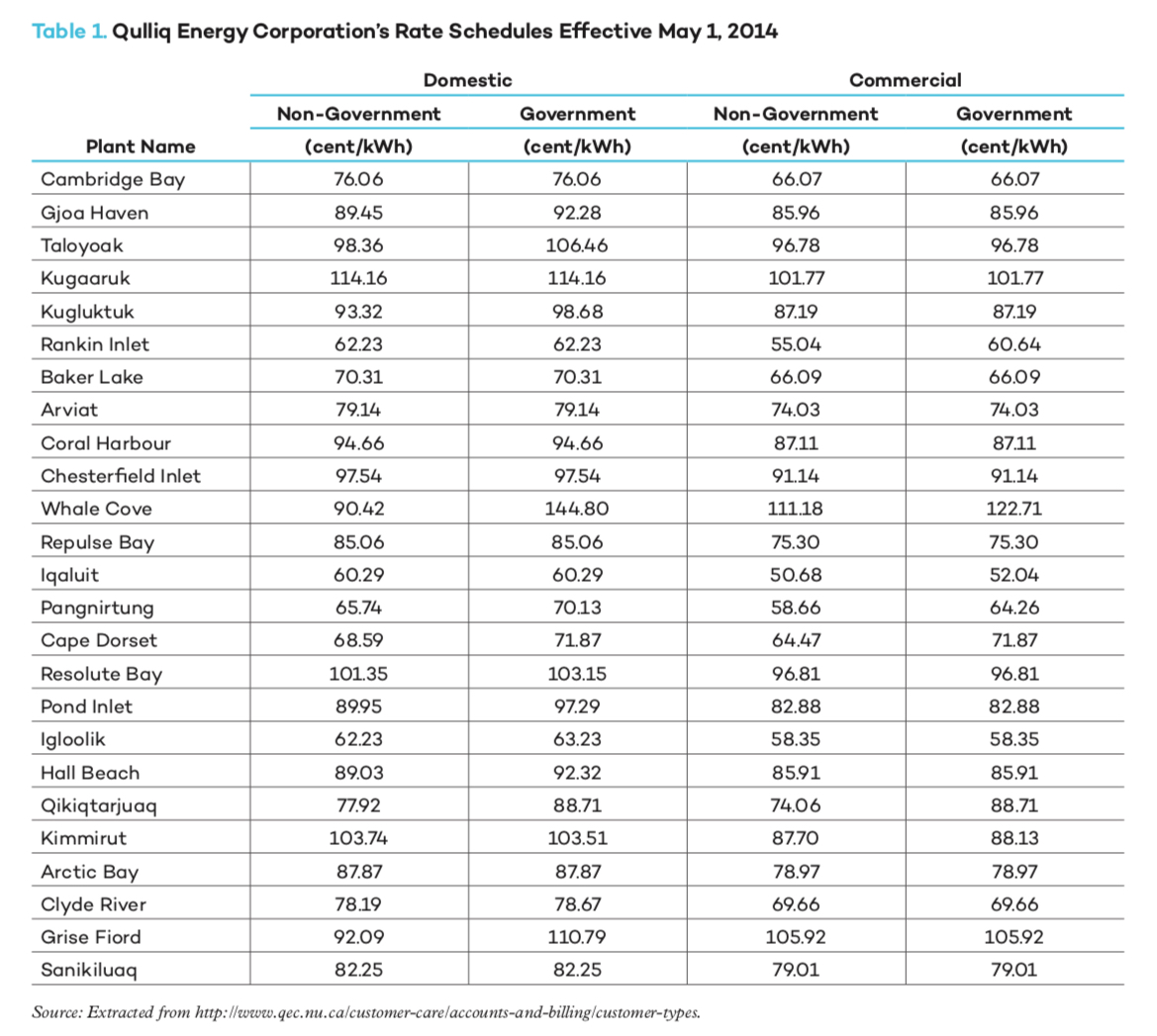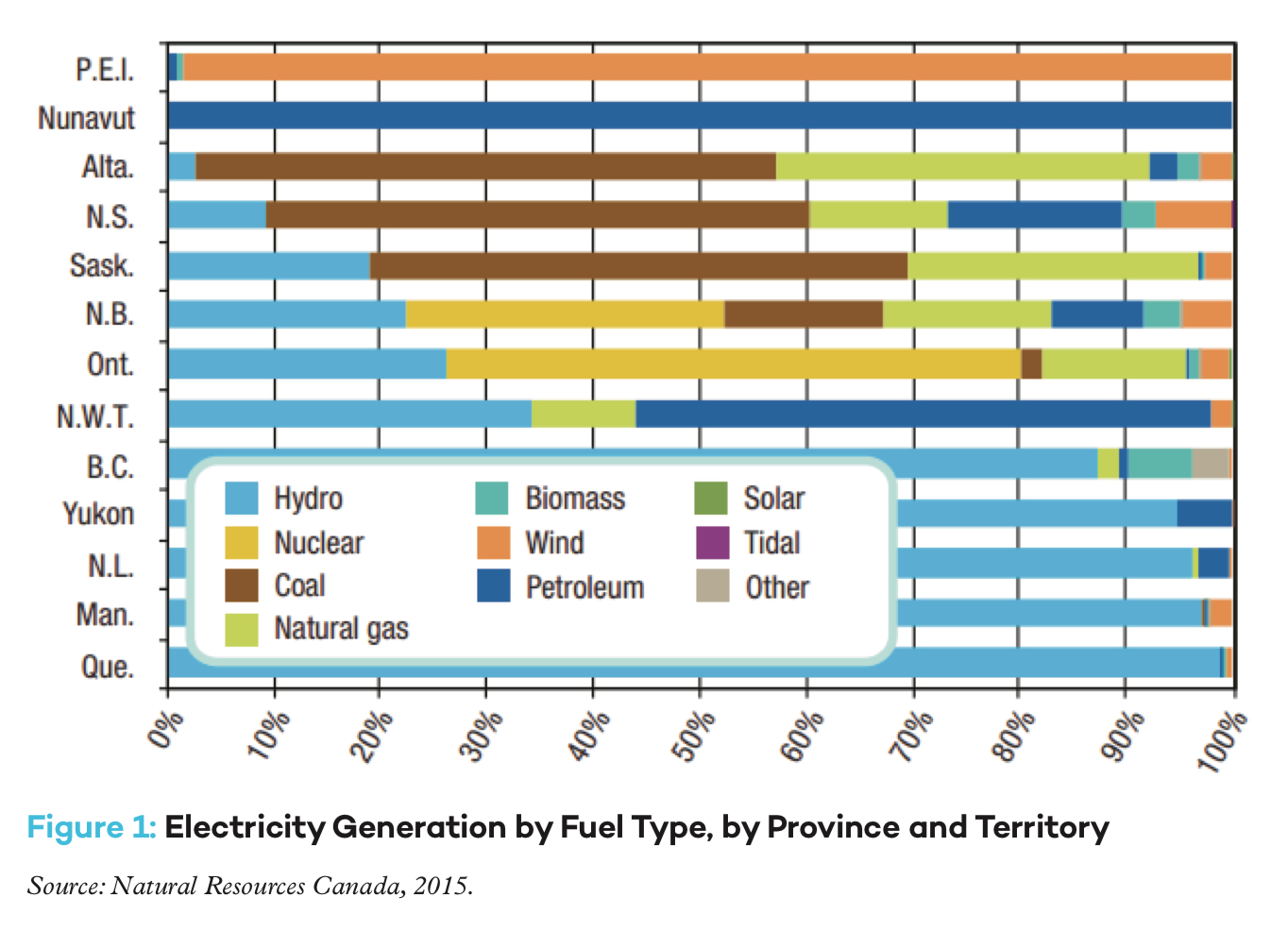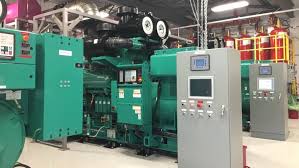Modern Energy Consumption
Fast forward 60 years since the time of settlements, and the establishment of Nunavut from the Nunavut Agreement, and today Nunavummiut use energy in many different ways. The most common ways we consume energy are by using electricity at home, school or work, heating our homes and community buildings in the winter, and driving our vehicles around town or on the land.

Qulliq Energy Corporation
Electricity is provided by the Qulliq Energy Corporation, and varies in cost depending on which community you live in and which rate class you belong to.

Image: The Qulliq Energy Corporation plant and offices in Iqaluit, Nunavut.
For example, a residential customer in Pangnirtung will pay 65.74 cents per kilowatt-hour (kWh), while a commercial customer in Pangnirtung will pay 58.66 cents per kWh.
See Table 1 below to see what the rates are for your community. What do you or your family pay?
In addition, subsidies are provided to lower the cost of energy.

Heating fuel is provided by private corporations in the communities of Iqaluit and Cambridge Bay, and by Government of Nunavut contractors in all other communities. The cost of heating fuel is directly related to the cost incurred by the Government of Nunavut in purchasing and transporting the fuel into the territory, thus heating fuel prices will vary by community and customer class. Similarly, transportation fuels (gasoline, diesel, aviation fuel) are provided by the Government of Nunavut, and its cost is directly related to the bulk purchase and delivery cost. Local contractors such as the in-town gas dispenser are then responsible for distributing the fuel.
As you can see from the chart below, Nunavut's only energy source is petroleum/diesel fuel.

Government of Nunavut - Nunavut Petroleum Products Division (PPD)
The Government of Nunavut, Nunavut Petroleum Products Division (PPD) is the department for the Territory that is solely responsible for purchase, transportation, storage and distribution of all petroleum products in Nunavut, including fuels for transport and heating. The Petroleum Products Division's responsibilities include:
Bulk purchasing of annual resupply
Fuel storage
Local delivery contracts
Overhead and administration
Policy and planning.
The Petroleum Products Division provides four fuel products for Nunavut, including:
jet fuel and aviation gasoline
diesel fuel for heating
electricity, aviation and motive uses; and
gasoline for motive use.
The Petroleum Products Division negotiates the bulk purchase of all fuel for the territory, and since one purchase is made, the cost of fuel is known for the entire year at the time of purchase.

This single purchase model is unique in relation to other jurisdictions as it allows for setting a single price for fuels-for example transport fuels-at a set price on 12-month intervals. The Financial Management Board has the authority to set retail prices for communities served by the Petroleum Products Division. The price determined by the board is a result of considering the following factors :
Actual product cost
Actual transportation cost
Commissions for local fuel sales, dispensing and delivery services
Operations and maintenance expenses
Product evaporation/shrinkage
Taxes
Generally, the Petroleum Products Division does not subsidize fossil fuels sales in Nunavut. The intent of the Petroleum Products Division is to recover the cost of fuel purchase as well as its expenses through the sale of the fuel purchased. Overall, the cost of fuel purchased has ranged between CAD 170 million and CAD 195 million over the 2012-2017 period, fluctuating based on bulk market prices. Revenues from fuel sales over the same period have ranged from roughly CAD 205 million to CAD 223 million, indicating a markup that is intended to cover elements such as salaries of the Petroleum Products Division staff as well as other operations and maintenance costs.
The Petroleum Products Division is expected to have performance against budget within CAD 10 million above or below breakeven. In years of surpluses, the extra funds are deposited into a Petroleum Products Stabilization Fund (PPSF). In some specific years (e.g., 2012-2013) there may be a minor deficit for the Petroleum Products Division, covered by the PPSF. However, if this deficit lingers, retail prices are adjusted to recoup losses and ensure that a structural deficit/subsidy does not emerge. This was the case in 2013 Nunavut, where fuel prices were adjusted for the first time since 2008 to address a recurring deficit. With the deficit eliminated and fund replenished as international oil prices fell, prices were lowered again in 2015.
Based on the goal of recouping expenses and bulk fuel costs, PPD is not considered to be providing subsidies for fossil fuels in Nunavut. While fuel sales may result in minor deficits in some years, the intention overall is to purchase and distribute fuel at a cost that will present a break-even position for Nunavut.
While PPD is not responsible for fossil fuel subsidies in Nunavut, IISD did identify several other programs and policies in place that can be considered subsidies.

Copyright © All Rights Reserved

